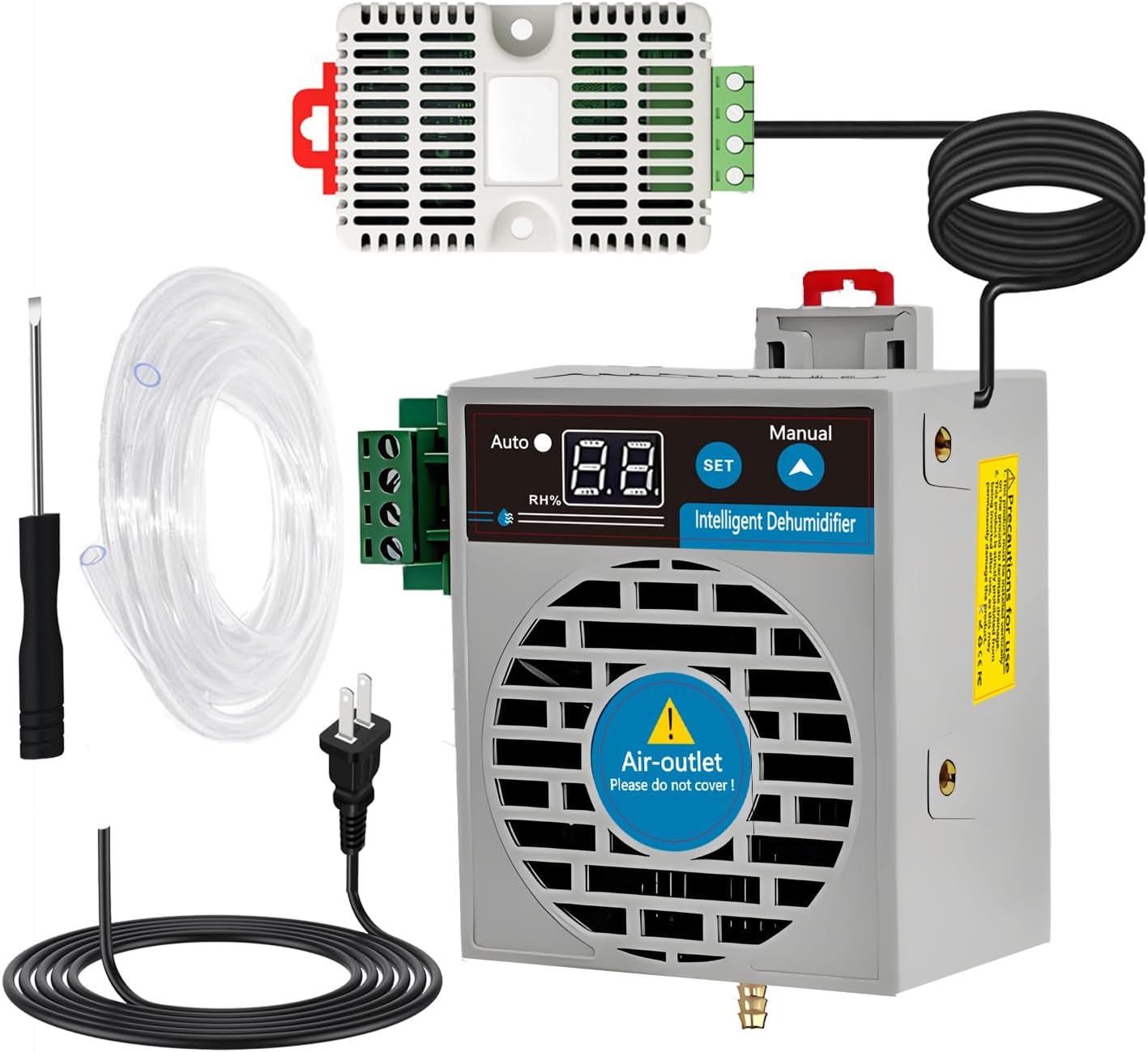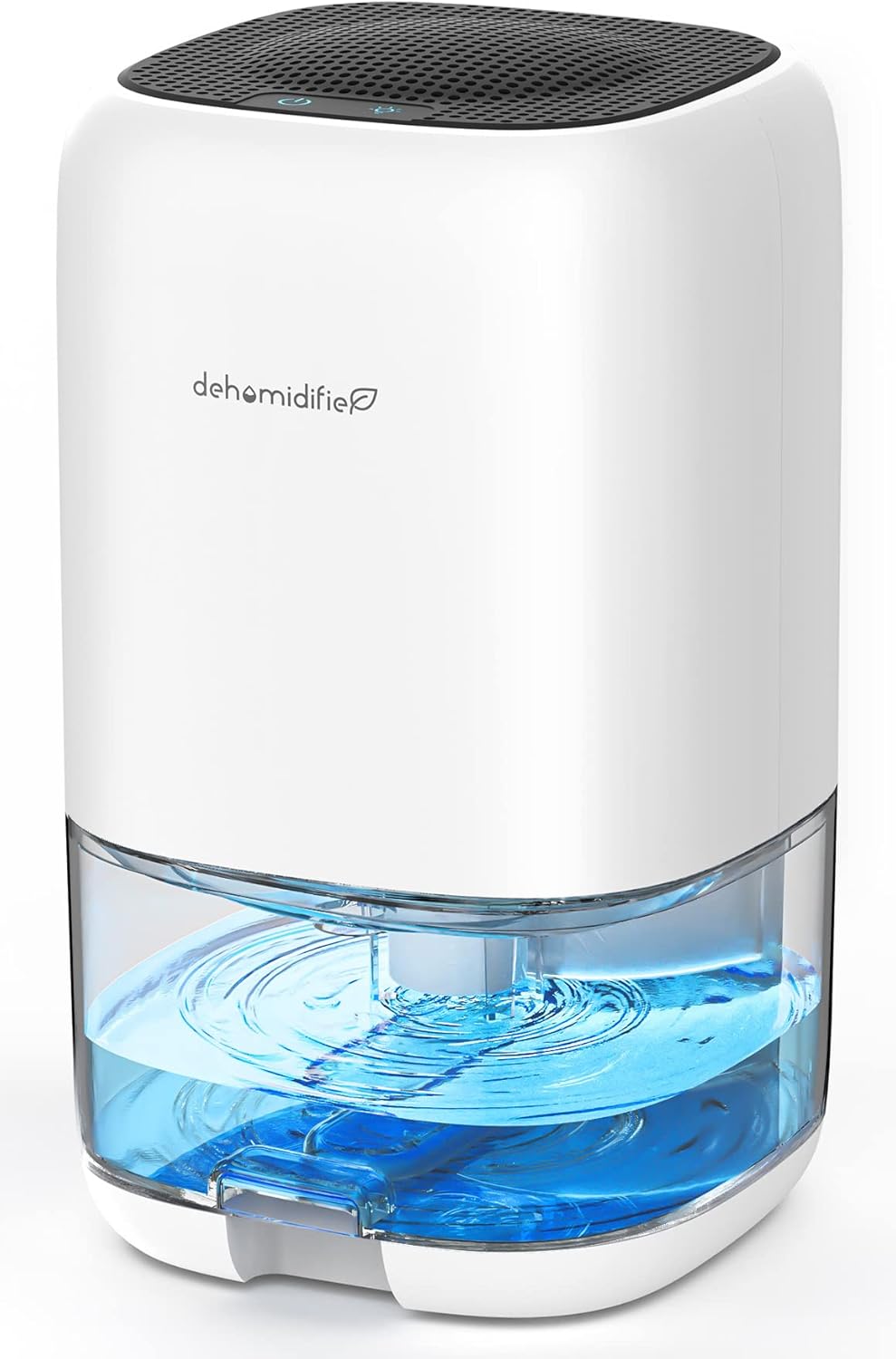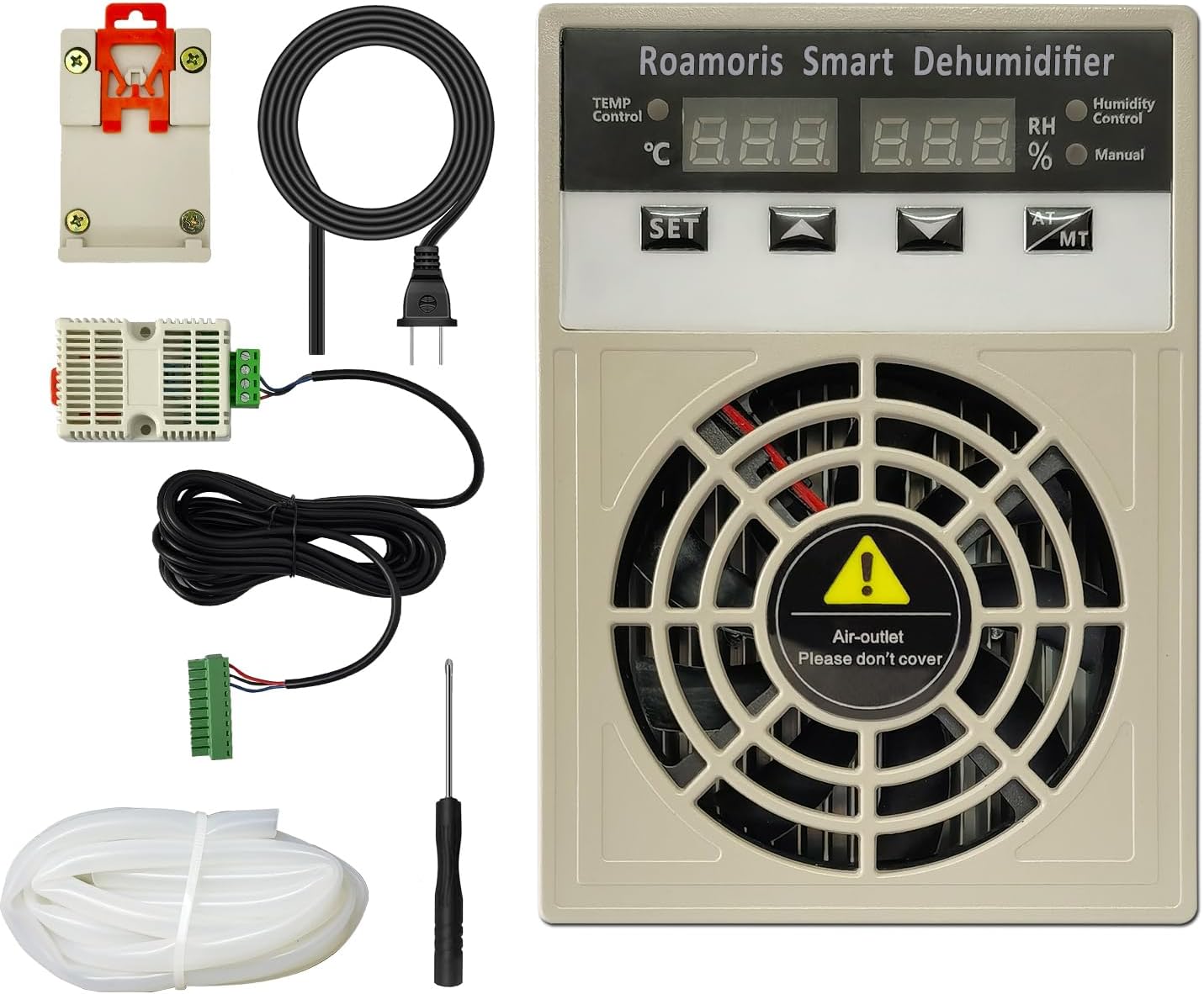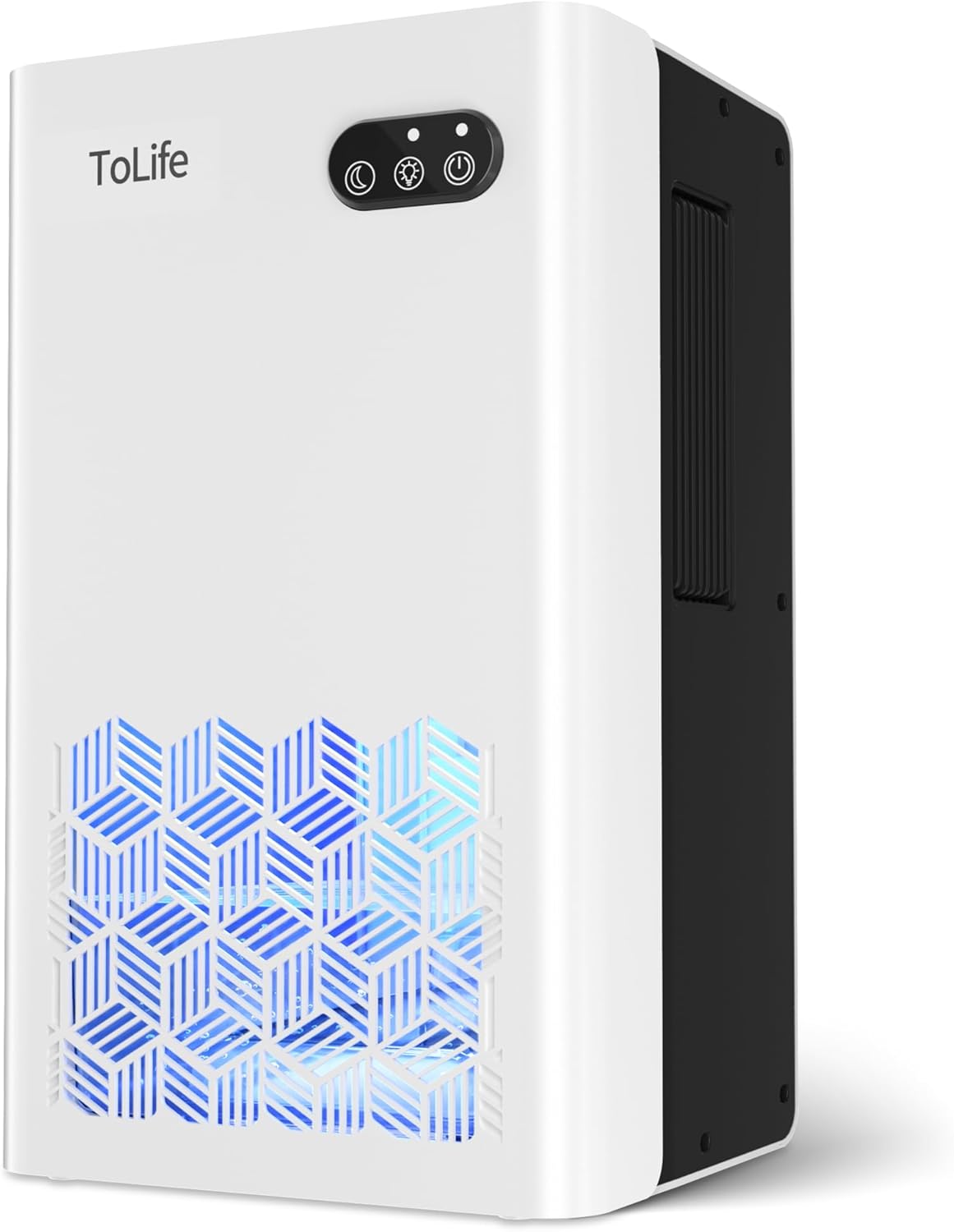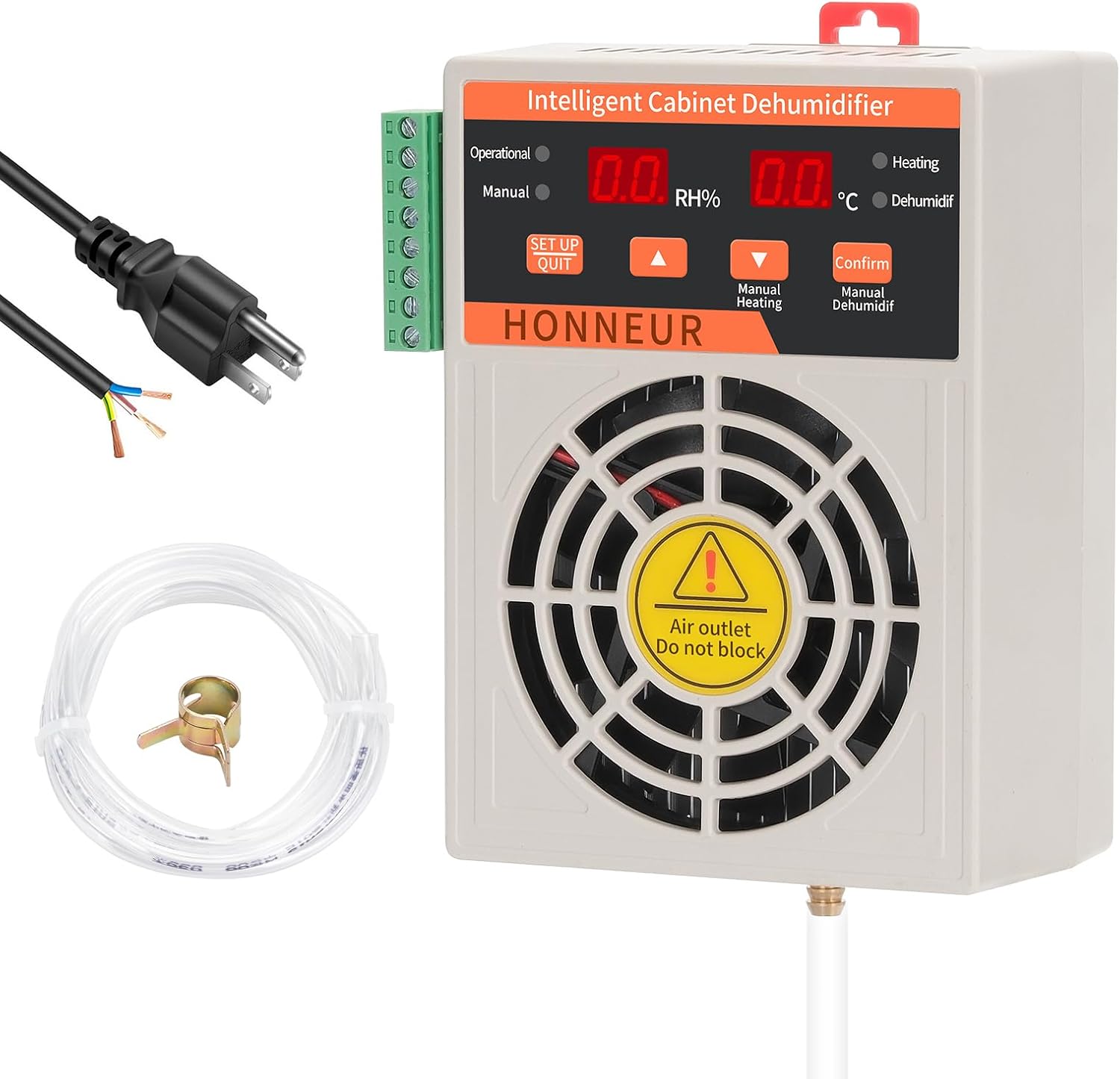Here’s an overview of the Best Dehumidifier For that we’ll explore today:
Moisture control is critical for grow tents, electrical enclosures, and compact storage spaces where humidity can degrade crops, equipment, and materials. Dehumidifiers designed for small spaces must balance compact form, low power consumption, and reliable shutoff logic to prevent overflow or mold growth. In this comparison, I tested five compact dehumidifiers spanning $39.99 to $62.99 to evaluate real-world performance, ease of use, noise, and durability in confined spaces. My methodology included: (1) evaluating listed capacity and stated operating range against typical small-space conditions (up to 280 sq ft; 80–90% RH conditions simulated), (2) assessing energy use and auto-shutoff behavior under full and partial tanks, (3) inspecting build quality, installation simplicity, and drainage options (hose kits or direct tank removal), and (4) factoring maintenance and long-term reliability signals from manufacturer specs and user reviews. The products covered range from budget-friendly, no-frills units to feature-rich modestly premium options.
1. Auto Small Dehumidifier for Grow Tent/Electric Box/Storage Cabinet/Closet/Safes
- Brand: LAVTAIOA
- Manufacturer: LAVTAIOA
Overview: The LAVTAIOA HSCS-25WP is marketed as a compact, multi-application dehumidifier designed for tight spaces like grow tents, electric boxes, and closets. It supports both AC and DC operation, includes an external humidity sensor, a digital display, automatic and manual modes, and a drainage hose for continuous operation. Its claimed capacity is 0.25 L/day, with a tiny footprint (2″D x 2.8″W x 3.5″H) and a light-weight build (15.2 oz). This unit emphasizes precise humidity control and minimal consumables, which is appealing for long-term use in enclosed spaces where mold and corrosion can threaten equipment. Prospective buyers should note the provided 5 ft power cord and included accessories (hose, screwdriver).
In practice, the HSCS-25WP targets micro-environments rather than larger rooms. Its external humidity sensor contributes to more accurate readings than some embedded-sensor models, but the overall dew point and extraction rate are modest given the 0.25 L/day rating. The automatic shutoff helps prevent over-drying and water accumulation, yet users should verify that the drainage setup is leak-free and that the hose run does not create kinks. The small form factor is advantageous for tight grow tent corners, but the unit’s limited capacity means it may require more frequent cycling in consistently humid spaces. Build quality appears lightweight; expect durability adequate for occasional use but not heavy-duty commercial scenarios.
Pros
- Compact, fits literally in tight spaces like grow tents and electrical boxes
- External humidity sensor improves measurement accuracy
- AC/DC compatibility offers flexible power options
- Automatic shutoff and manual mode provide user control
- Includes hose for drainage and essential install hardware
Cons
- Very low dehumidification capacity (0.25 L/day) limits use in higher RH conditions
- Tiny form factor may lead to frequent cycling in humid basements
- Limited safety features beyond auto shutoff; no explicit noise/thermal data
2. Dehumidifier
- Brand: TABYIK
- Manufacturer: TABYIK
Overview: The TABYIK DH-CS01 is a 35 oz (approximately 1,000 ml) tank-based dehumidifier designed for small spaces up to ~280 sq ft. It emphasizes quiet operation (reported around 28 dB), a clear water tank with a fill sensor, and a color-changing LED not mentioned in the spec but referenced in product copy. Its capacity (0.45 L/day) is modest but practical for bedrooms, RVs, bathrooms, and closets, with auto shutoff when the tank is near full. Energy use is described as low (under 1 kWh/day), fitting a budget-conscious buyer who needs discrete operation in living spaces.
Performance-wise, the TABYIK unit is best suited for episodic humidity control rather than constant, high-load dehumidification. The 28 dB noise target is compelling for a bedroom or office. The integrated tank and simple drain procedure (manual tank emptying) support straightforward maintenance, though there is no dedicated hose drainage in the listed components beyond the tank. The 5.9″ x 5.9″ footprint with a back handle enhances portability, which is valuable for renters or temporary setups. However, users should expect less effectiveness in basement-grade humidity conditions, and the 0.45 L/day capacity may require near-continuous operation in very damp environments.
Pros
- Very quiet operation suitable for bedrooms and offices
- Reasonable 35 oz tank size with visual water level
- Low energy consumption claimed (under 1 kWh/day)
- Compact, portable design with built-in back handle
- Auto shutoff protection when tank is full
Cons
- No dedicated external drainage option stated; relies on tank emptying
- Moderate dehumidification capacity may be insufficient for damp basements
- Colorful LED features add cost without affecting performance
3. Small Dehumidifier for Grow Tent
- Brand: Roamoris
- Manufacturer: Roamoris
Overview: Roamoris GT01 targets ultra-small spaces with dual voltage compatibility (110V/240V) and a temperature control switch, plus an auto-off function. The unit is designed to integrate into grow tents and similar confined environments, with a focus on ensuring stable humidity and protecting sensitive equipment or plant gear. While feature overview highlights versatility and safety, there is limited technical capacity data (no explicit liter/day rating) in the provided spec, suggesting a compact, low-capacity dehumidifier that prioritizes simple use and space savings.
In use, the Roamoris GT01 prioritizes space efficiency and basic environmental control. The absence of a specified daily dehumidification rate makes it essential to rely on its auto-off logic and the built-in temperature control to avoid over-drying or under-drying. For grow tents, this can be suitable as a supplementary device in conjunction with larger systems, or as a backup option in small offshoot rooms. The 7.36 x 6.46 x 5.79 inch footprint and 1.9 lb weight facilitate easy placement, but the lack of documented continuous drainage options means you may need to rely on manual water removal, depending on use-case.
Pros
- Dual voltage compatibility expands international use
- Built-in temperature control helps maintain stable conditions
- Auto shut-off enhances safety and energy efficiency
- Compact and lightweight for tight spaces
- Reasonable price for a grow-tent focused dehumidifier
Cons
- No explicit dehumidification rate provided (unclear capacity)
- Limited drainage options described; may require manual emptying
- Brand recognition and long-term reliability are not established
4. ToLife Dehumidifier for Home
- Brand: ToLife
- Manufacturer: ToLife
Overview: The ToLife TZ-C2 is a higher-capacity compact unit designed to cover up to 1000 sq ft, featuring a large 95 oz (approximately 2.8 L) tank, dual-mode operation (standard vs. sleep), seven color LED ambient lighting, and automatic shutoff. It uses semiconductor condensation technology for quiet operation and aims to balance performance with feature-rich versatility in living spaces, basements, bedrooms, and bathrooms. The unit weighs about 5.85 pounds and measures 8.27″ L x 5.55″ W x 13.78″ H, suggesting a taller but still compact profile suitable for shelving or corners.
Performance-wise, ToLife emphasizes quiet operation (< 30 dB in sleep mode) and strong moisture removal capabilities, with a claimed humidity target of staying below 45%. The 95 oz tank reduces maintenance frequency compared to smaller units, while the 2-speed operation offers flexibility. The seven-color LED night-light feature can enhance user experience in bedrooms, but it adds cosmetic value rather than functional dehumidification benefits. In real-world use, this model is well-suited for mid-sized living spaces where noise sensitivity and aesthetic considerations matter, though its electrical draw at 93 W should be considered for energy budgets in larger, constantly running dehumidification scenarios.
Pros
- Large 95 oz tank reduces frequent emptying
- Quiet operation with dedicated sleep mode
- 7-color ambient LED light can function as night light
- Good coverage for up to 1000 sq ft
- Auto shutoff protects against overflow
Cons
- Higher price point within this group
- Tall form factor may limit placement options on low shelves
- LED features add complexity without direct dehumidification benefit
5. Fully automatic mini dehumidifier
- Brand: HONNEUR
- Manufacturer: HONNEUR
Overview: HONNEUR’s HN500A is a compact 60 W automatic dehumidifier designed to be installed in distribution boxes, plant racks, and other small electrical spaces. It emphasizes automatic operation, a 0.5 L/day capacity claim, and the ability to be mounted with rails or hooks plus optional DIY start/stop settings. The unit targets continuous humdification control for wiring, cables, and equipment in confined environments where traditional room dehumidifiers would be inappropriate.
In practice, this device is best viewed as a space-saving, installation-friendly moisture control option for electrical enclosures and small cabinets. The 0.5 L/day capacity is modest, but its ability to operate directly on 24–265 V and its compact dimensions enable placement within distribution boxes or shelving rails. Prospective buyers should consider the risk of condensation in larger volumes or during peak humidity periods; this unit is designed for steady, localized humidity management rather than bulk dehumidification. The approach is niche but effective for preventing moisture-related electrical issues in compact spaces.
Pros
- Mountable or rail-installable design fits electrical boxes and cabinets
- Automatic operation with customizable start/stop settings
- Wide input voltage compatibility (AC/DC 110–265V)
- Low profile footprint suitable for tight installs
- Strong value for niche, moisture-sensitive installations
Cons
- Very limited dehumidification rate for larger rooms
- Specialized use case; not ideal for general room dehumidification
- Limited user reviews and brand visibility raise reliability questions
Frequently Asked Questions
We’ve compiled answers to the most common questions about dehumidifier fors to help you make an informed decision.
Conclusion
.
.
Final thoughts here.

